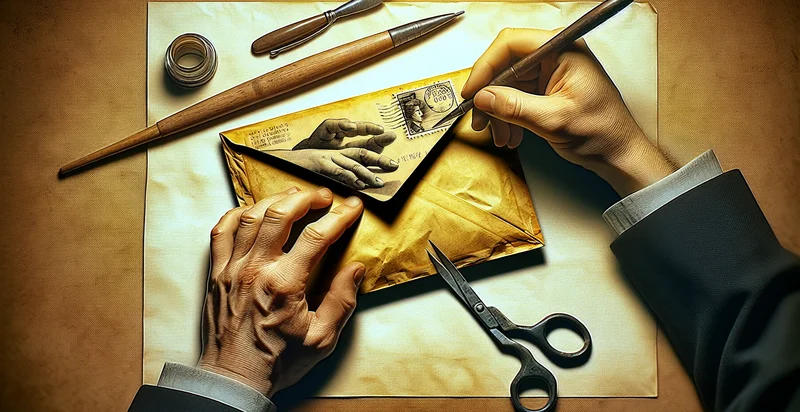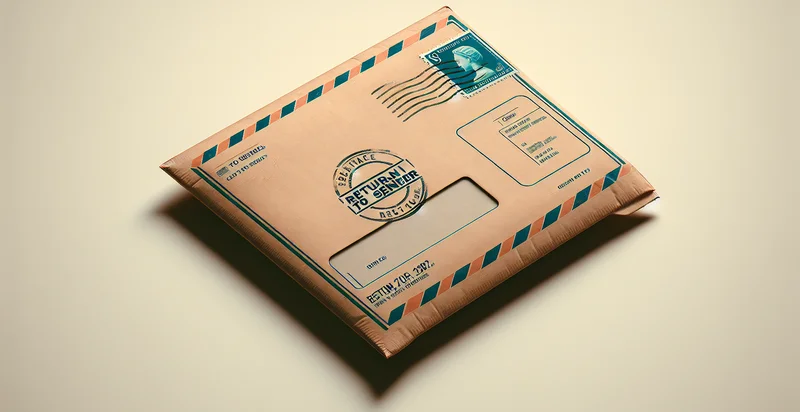Identify envelope condition
using AI
Below is a free classifier to identify envelope condition. Just upload your image, and our AI will predict the condition of the envelope - in just seconds.

Contact us for API access
Or, use Nyckel to build highly-accurate custom classifiers in just minutes. No PhD required.
Get started
import nyckel
credentials = nyckel.Credentials("YOUR_CLIENT_ID", "YOUR_CLIENT_SECRET")
nyckel.invoke("envelope-condition", "your_image_url", credentials)
fetch('https://www.nyckel.com/v1/functions/envelope-condition/invoke', {
method: 'POST',
headers: {
'Authorization': 'Bearer ' + 'YOUR_BEARER_TOKEN',
'Content-Type': 'application/json',
},
body: JSON.stringify(
{"data": "your_image_url"}
)
})
.then(response => response.json())
.then(data => console.log(data));
curl -X POST \
-H "Content-Type: application/json" \
-H "Authorization: Bearer YOUR_BEARER_TOKEN" \
-d '{"data": "your_image_url"}' \
https://www.nyckel.com/v1/functions/envelope-condition/invoke
How this classifier works
To start, upload your image. Our AI tool will then predict the condition of the envelope.
This pretrained image model uses a Nyckel-created dataset and has 7 labels, including Acceptable Condition, Damaged Condition, Fair Condition, Good Condition, Great Condition, Poor Condition and Very Damaged Condition.
We'll also show a confidence score (the higher the number, the more confident the AI model is around the condition of the envelope).
Whether you're just curious or building envelope condition detection into your application, we hope our classifier proves helpful.
Related Classifiers
Need to identify envelope condition at scale?
Get API or Zapier access to this classifier for free. It's perfect for:
- Mail Processing Optimization: This function can improve the sorting and processing of incoming mail by identifying the condition of envelopes. By flagging damaged or unusual envelopes, businesses can prioritize handling or take corrective actions to prevent delays.
- Quality Control in Direct Mail Campaigns: Marketing agencies can utilize this function to ensure that mail pieces sent out in direct marketing campaigns are in good condition. Identifying envelopes that are torn or stained can help in assessing and maintaining the quality of promotional mail, leading to a better customer response rate.
- Fraud Detection in Banking: Financial institutions can implement this function to examine the condition of envelopes containing sensitive documents. By identifying if envelopes show signs of tampering or replacement, institutions can enhance security measures and flag potentially fraudulent activities.
- Postal Service Efficiency: Postal services can use this function to automatically scan and classify envelopes as they go through sorting machines. By identifying broken or damaged envelopes, they can reroute or handle these items separately to streamline delivery processes and improve overall efficiency.
- E-commerce Returns Management: E-commerce businesses can leverage this function to assess returned packages. By analyzing the condition of the envelopes, companies can gain insights into return reasons based on envelope condition, which can inform product packaging and fulfillment strategies.
- Customer Service Enhancement: Companies can use this function to analyze customer complaints regarding delivery issues. By identifying envelopes in poor condition, organizations can better understand customer pain points and refine their mailing processes to enhance customer satisfaction.
- Document Management in Logistics: Logistics firms can adopt this function to monitor the condition of envelope shipments. By ensuring that shipping documentation is intact and undamaged, companies can reduce the risk of processing errors and streamline their logistics operations.


